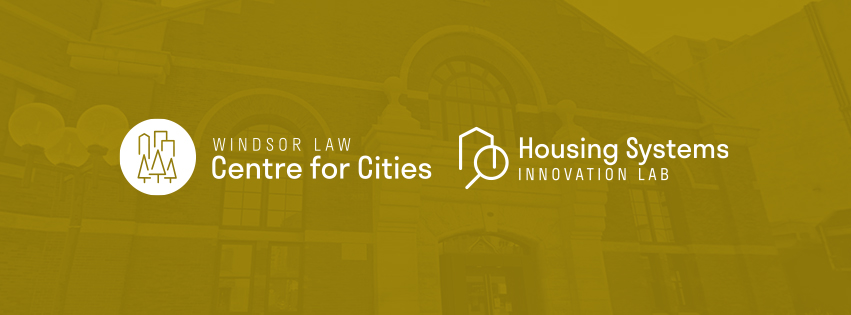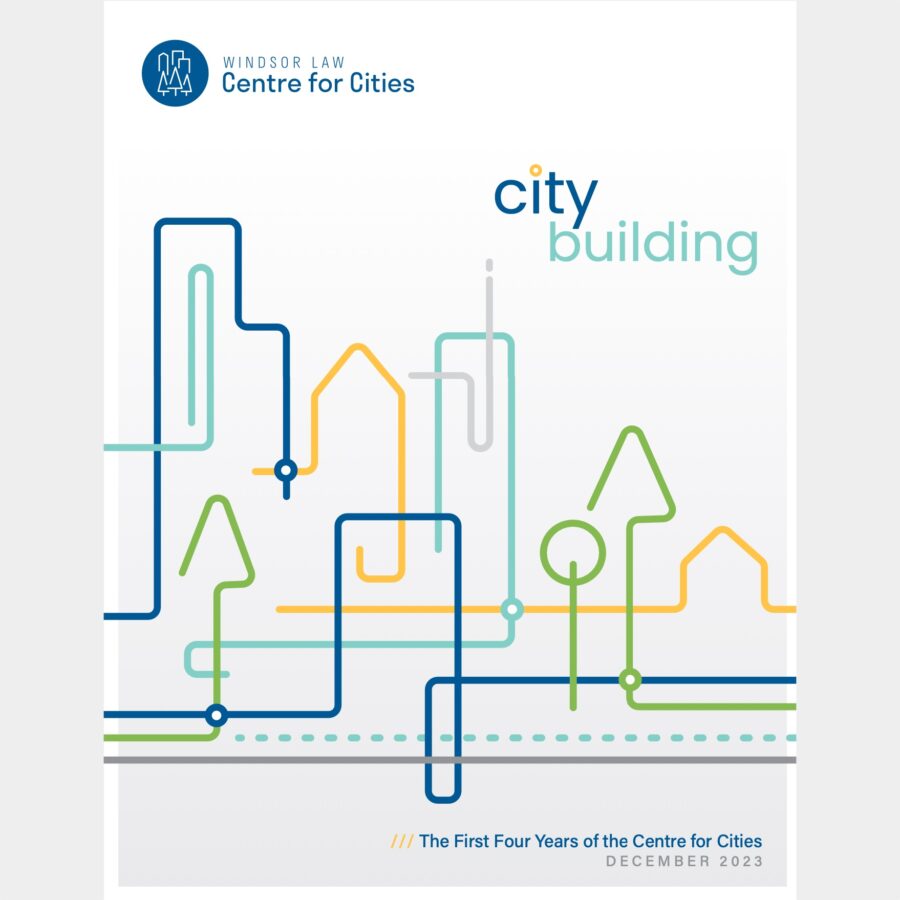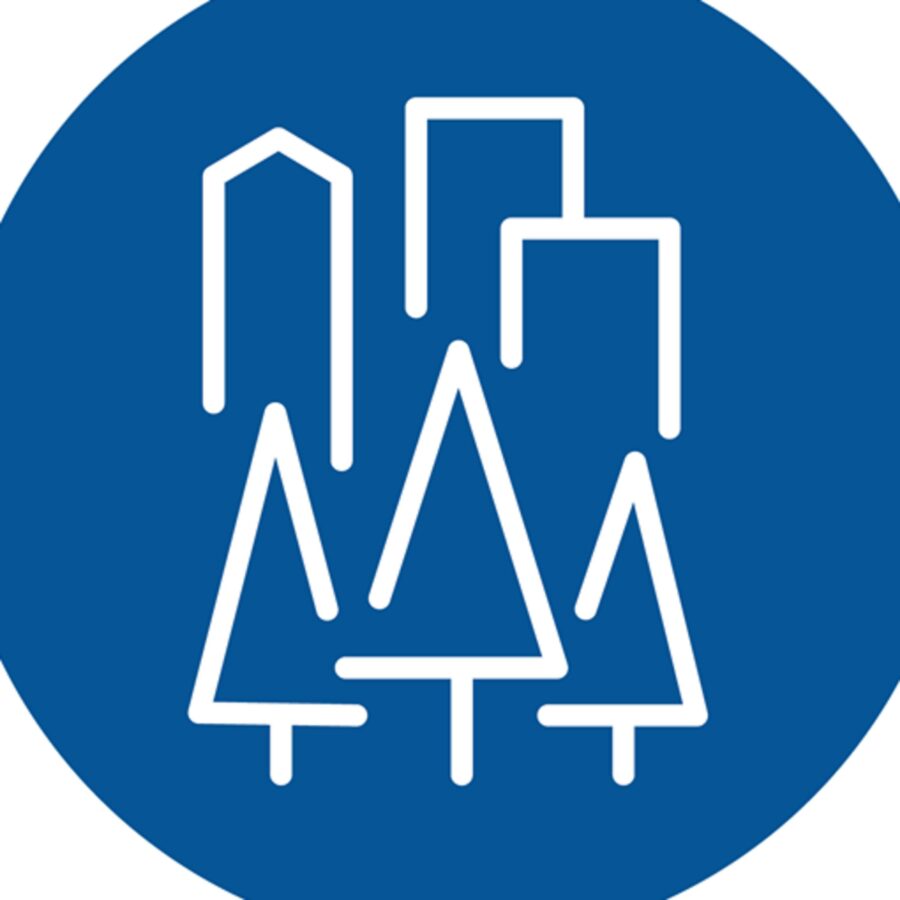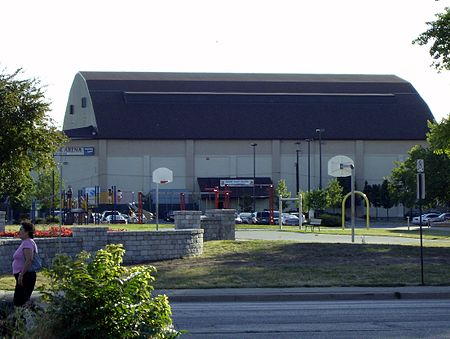
Blog Series: Exploring the Potential of Community Land Trusts, Part 3
How Would They Look in Windsor?
(21 September 2021) by Princess Doe
This is the final post of a three-part blog series on Community Land Trusts (CLTs). As a community-driven model, CLTs have been used as tool to centre the voices of marginalized populations in community decision-making and protect from gentrification and forced displacement. As discussed in the previous post, a CLT is a non-profit organization, governed by a Board of Directors, that acquires land to oversee the development of projects that have locally-serving and social purposes. This can include affordable housing, community programming, and small businesses. In particular, there has been continued attention on the potential for municipalities in Canada to utilize tools such as inclusionary zoning and property exemptions to work with local communities in developing CLTs.
Two adjacent historic properties in Windsor, Ontario which have been sources of ongoing debate the city are the Windsor Arena and Water World, both located at the eastern boundary of downtown. Constructed in 1924, The Windsor Arena (known to locals as “The Barn”) was a long-standing sporting facility and among one of the oldest of its type in North America. It was the home of the Windsor Spitfires, the city’s Ontario Hockey League (OHL) team, from 1975 to 2008. It was then home to the University of Windsor Lancer hockey team until March 2012, before being closed by the City of Windsor.
Since its closure, there have been several proposals submitted to city council for a new use of the space, including one from the Windsor Express basketball team. There have also been calls from the community to designate it a historical site. Throughout its history, the arena had been a space for lacrosse, rodeos, boxing and roller derbies. Further, the Windsor Arena is a focal point of the McDougall Street Corridor, which was the heart of Black culture in Windsor during the mid-20th century. Various events for the Black community were held at the Arena, including Emancipation Day events. From the 1930s to the 1960s the City would host more than 100,000 people annually for Emancipation Day weekend.

Martin Luther King in Windsor addressed the 1956 Emancipation Day Celebration. From left: Russel Small, King, Theodore Boone, and Walter Perry. Photo Credit: Windsor Law Daily News.
Next to the Barn is Water World, a long-standing community centre that housed a recreational pool until it was closed by the City in 2014 after the opening of the downtown Adventure Bay Aquatic Centre. It continued to be used a space for after school programs, sporting activities, and youth mentoring until 2020. There is also park and playground space adjacent to the two buildings, The park space is frequently used by families who live in Glengarry Court, the neighbourhood next to the two properties that hosts a diverse population, including many newcomer and racialized residents living in social housing.
In April 2020, at the start of the COVID-19 pandemic, the City of Windsor opened a temporary Housing, Homelessness, and Health Hub, a support centre that services underhoused populations, in the Water World building.
A CLT model of ownership for the two properties has the potential to centre the diverse needs of the neighborhood and celebrate its history. This could include developing including more affordable and/or co-op housing on the properties. Organizations like the Black Council of Windsor-Essex have also been advocating for more green space to attract retail customers, more street-lined trees, and more recreational areas such as basketball courts. The City of Windsor could sell Water World and the Barn for a nominal fee to a CLT, with whom they would then work to ensure adequate zoning and development support. Similar to the goal of some other CLTs discussed in this blog series, like the Hogan’s Alley Society in Vancouver, the CLT could be a start for designating a Black historic district, given the history of Windsor’s Black community in the area.
The announcement of funding from the province to continue to fund the housing and homeless support centre at the WaterWorld location led to some disagreement in the community about the best use of the space, and how to reconcile serving multiple marginalized groups. Specifically, there were frustrations that it led to the displacement of Black and other racialized youth programming in the community. Organizational and ownership models that centre community-driven decision making, like CLTs, can allow for collaboration between various stakeholders in social planning and community development. The creation of a CLT may allow for the homeless support centre to be placed in a location that would continue to best serve unhoused populations in the downtown core, while continuing to have Water World be a space that provides recreational and childcare spaces for low-income families in the area.
This blog series on community land trusts is not meant to be prescriptive. Rather it provides an example of how community-led models of ownership can drive sustainable development, providing safer, more inclusive, and healthier environments that enhance the well-being of marginalized groups, increase civic engagement, and build community capacity in Windsor and beyond.
Princess Doe (she/her) is a third-year JD student at Windsor Law and a Student Research Associate for the Windsor Law Centre for Cities.
Main Image Credit: Wikipedia.
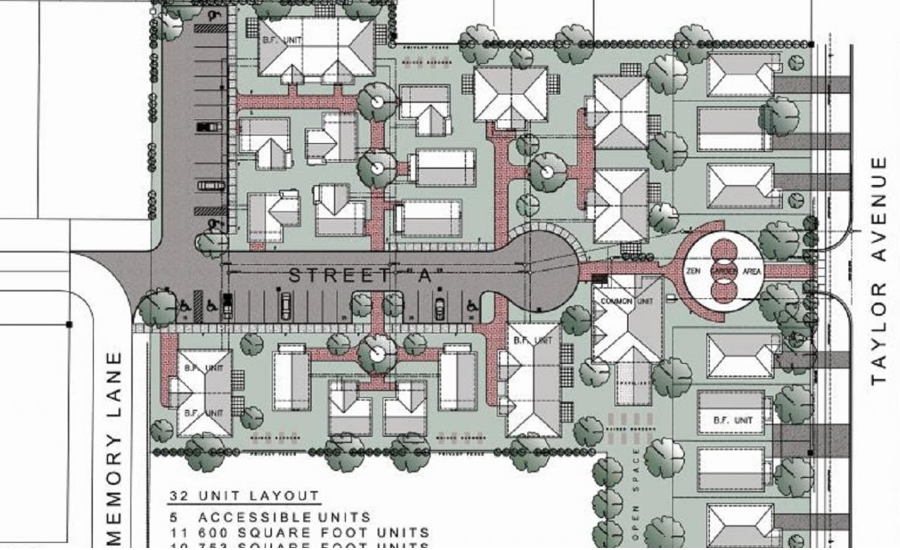
Blog Series: Exploring the Potential of Community Land Trusts, Part 2
How Do Community Land Trusts Work? (9 September 2021) by Princess Doe This is the second of a three-part blog…
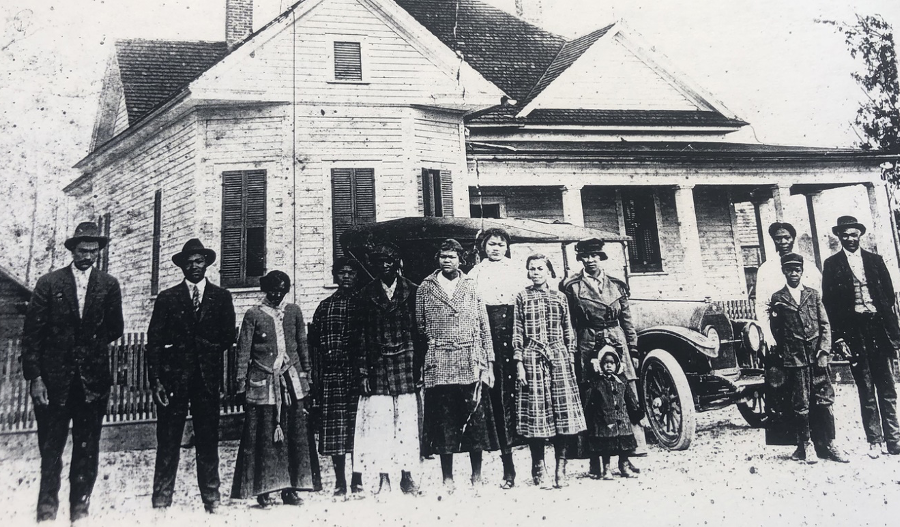
Blog Series: Exploring the Potential of Community Land Trusts, Part 1
An Introduction to Community Land Trusts and their Use in Canada (20 August 2021) by Princess Doe This is the…
